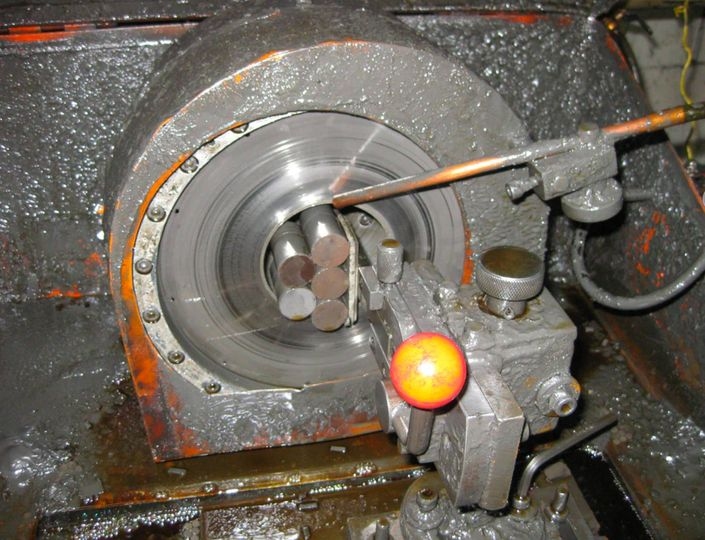The manufacturing process of neodymium-iron-boron (NdFeB) magnets is quite complicated.
The iron,neodymium and boron alloy
You have to start by making the alloy of the neodymium magnet. The three elements : iron, neodymium and boron as well as other ingredients are finely ground and heated together under vacuum. The resulting alloy has the chemical formula NdFeb. The neodymium-iron-boron is then already slightly magnetised to give it a direction to the future axis of magnetisation (isotropic axis). It is then pressed into a mould, often of a cylindrical or parallelepipedic shape. Then the mixture is sintered (pressed and heated under vacuum to the limit of the melting temperature) and cooled very slowly.
The alloy now has a particular crystalline structure which will boost magnetisation.
Rough drafts are sawn or turned until they have the desired size and shape, disc, cylinder, parallelepiped, ball. This results in raw magnets made of NdFeb. If the thickness of the magnet obtained by machining is accurate to 1/10 millimetre. The diameter obtained by moulding is less accurate.
Nickel, zinc or epoxy coating
The raw magnets are then coated by galvanizing, as a rule,with a layer of nickel. Without this coating, magnets would oxidise very quickly and decompose into grey dust. Most neodymium magnets have a nickel-copper-nickel coating, or, for Auris, a zinc or epoxy coating for textiles and titanium magnets for Medimag therapeutic magnets (Auris patent) for good biocompatibility.
How to magnetise magnet
The finished magnets are placed in an electric coil through which a strong current is sent by capacitor discharges for a thousandth of seconds. This coil produces an extremely strong magnetic field that magnets the magnet, i.e molecules and crystals align with the magnetic field of the coil. When the coil is switched off, the magnets remain highly magnetic.
Neodymium magnets are valuable. At the end of the life of your Auris products, do not throw them away. The Auris Colibri program gives them a second life to save minerals and energy.
With the Auris Colibri program, you will receive a prepaid return label and a voucher of 20% of the amount of your original purchase.
Auris Colibri program : http://auris-colibri.org/

